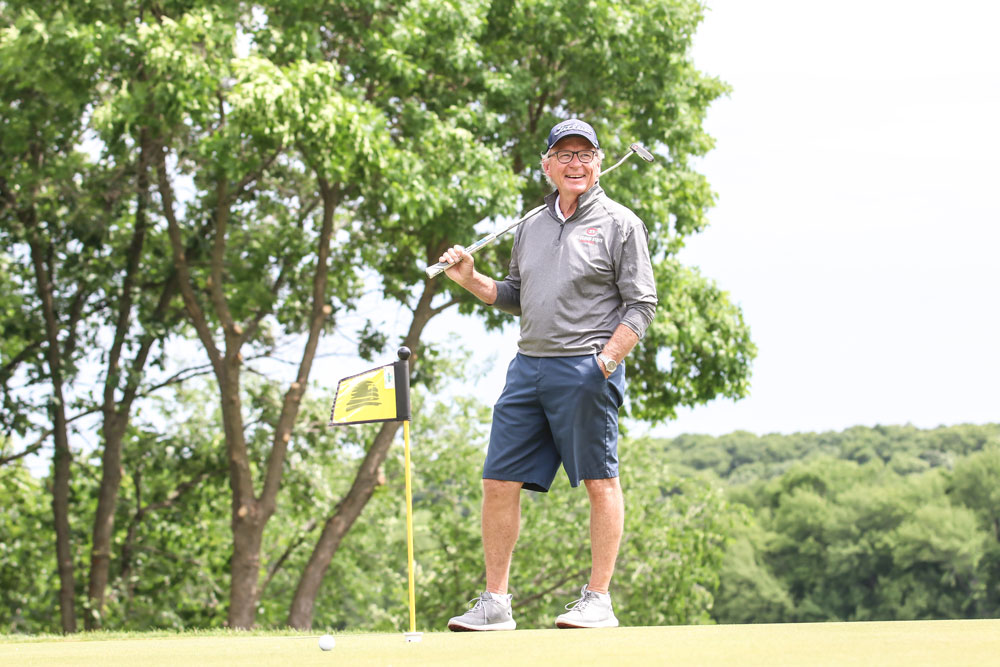Terry’s Story
Surgery“It really amazed me. I think I had maybe two or three tiny incisions. When I got home, I felt OK.”
Robotic surgery at CentraCare – St. Cloud Hospital can help patients get back into the swing of things faster with less pain
If you’re an avid golfer and you live in Minnesota, chances are you’re keenly aware how fast summer comes and goes.
That’s why Terry Slingluff, 73, was hoping to delay treatment for a hernia that was gradually becoming more painful. After all, he was right in the middle of Central Minnesota’s prime golfing season.
“I probably had symptoms for six months to a year,” Terry said. “I didn’t think it was bad enough to do anything about it.”
A hernia is a weakness in a person’s abdominal wall. Occasionally, tissue such as an intestine can poke through this weakened area, causing pain and discomfort. As symptoms worsen, surgery may be required.
Play suspended
Terry often plays golf as much as two or three days per week. One day on the course, Terry confided in a friend, a retired physician, about his pain and discomfort. His friend advised him to see a general surgeon at CentraCare.
Terry wondered how much golf he would miss. He’d heard that some hernia repairs are done with the help of an ultraprecise, minimally invasive robotic surgical system, which is operated by a surgeon through a console that controls the robot arms. He wanted to find out if this could be an option for him.
Andrea (Lundeen) Kales, M.D., a general surgeon at CentraCare, has been using the da Vinci surgical robot since 2011. She’s trained to perform a variety of procedures using the da Vinci Xi, the latest robotic surgical system developed by Intuitive.
Dr. Kales says some patients might be hesitant at first to put their trust in a robot.
“When I explain that it can’t do anything without me operating the controls, they usually feel more comfortable,” she said.
St. Cloud Hospital has three da Vinci systems. Nearby CentraCare – Monticello and Carris Health, a subsidiary of CentraCare, each have one as well. At CentraCare, the da Vinci systems are used in numerous general surgery procedures, including hernia repair. They also are used in a variety of urology and gynecology cases.
Surgical options
Not all hernias are created equal. Depending on a variety of factors, some hernia repairs are still performed using traditional, open surgery. Others can be repaired laparoscopically, a less invasive technique in which the surgeon uses a special camera and surgical instruments that are passed through tiny incisions called ports.
Both laparoscopic and robotic surgery use smaller incisions compared to open surgery. These minimally invasive techniques mean patients can often resume normal activities sooner and with less pain.
Compared to laparoscopic surgery, robotic surgery systems provide even more precision, angles and instrument positions, expanding the range and complexity of minimally invasive procedures that can be safely performed.
Back on the course
Dr. Kales repaired Terry’s hernia using the da Vinci system.
“It really amazed me,” Terry said. “I think I had maybe two or three tiny incisions. When I got home, I felt OK. I just can’t say enough good things about Dr. Kales.”
Recovery time can vary. However, Terry was back on the golf course in just a little more than a week, salvaging the rest of his precious summer season.
